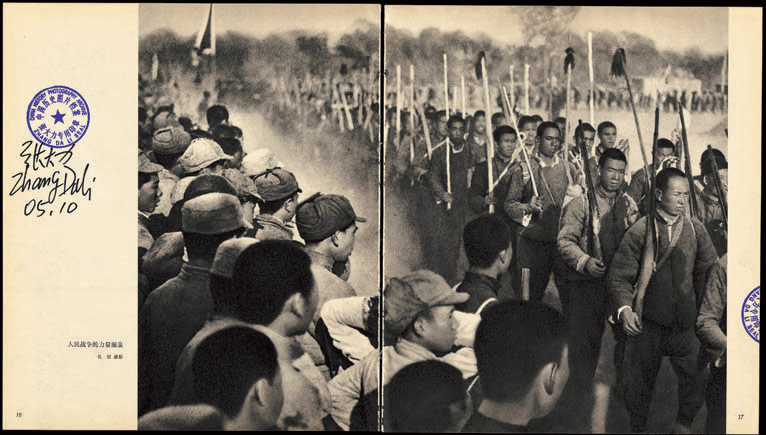ZHANG DALI: A SECOND HISTORY
| April 1, 2010 | Post In LEAP 2

As the title of his show suggests, Zhang Dali seeks to present a “second history” that differs from the official historical narrative. Zhang reveals the cracks in the “historical fact” to which the photographs he presents are meant to bear witness by juxtaposing different versions in a genealogy of the image. By doing this, he also pokes holes in a narrative discourse, i.e. the official historical ideology of the People’s Republic. On this level, Zhang’s work, five years in the making, constitutes a penetrating and specific form of social and historical criticism.
Among the photographs Zhang Dali has uncovered, those that moved me were not the typical images falsified for political motives, with certain political personages added or erased. Such stories are countless, and the methods of falsification are simply too obvious. Our sudden comprehension upon viewing the original photographs presented by Zhang then comes a little too easily and cheaply—a triumph of “truth” over falsehood, the Hollywood hero defeating the bad guy, leaving us with nothing more to discuss. These photographs only bring up the most verbal parts of the image; what is altered in these images is only—to borrow from Roland Barthes—studium (the broader socio-cultural reading of the image) and not punctum (its poignant, personal detail).
The truly poignant images reside in the endless gray zone between truth and falsehood, where upon first glance one cannot distinguish between the two. When one discovers subtle discrepancies between the photographs, punctum arises in the details; a different element escapes out of the language system the photographer has tried to build. For example, in The People’s War’s Source of Strength the difference between the altered and the original versions lies in the lower left corner, where faces in the crowd have been cut out or drawn over. In the edited version all eyes in the crowd are on the detachment of people’s militia in the center of the frame; in the original the many faces in the foreground vie for our attention, with one individual even staring intently at the lens. Puncta such as these, having nothing to do with the “source of strength of the people’s war,” have been mercilessly expunged.
Such moments of punctum bring a sense of reality into the photographs; the face staring at the camera implies that this is not a performance. Regrettably, the image’s editor, unable to read this implication, treated the photograph entirely as a performance, unmercifully correcting the “errors” he found. Quite possibly he believed in photography as art and art as elevated from life—which is to say that he never thought to use the photograph to offer a sense of reality, instead choosing to use the image to express a particular discourse, a certain aesthetic concept or a kind of political theater.
What needs to be emphasized here is that a sense of reality is not the same as reality itself, that because something looks real does not mean that it is real. Every signifier contains an element of truth. Yet this does not mean that there is no difference between a photograph and a painting. If we accept that a sense of realism in painting comes from implementing a set of representative ideals, it follows that the sense of reality in photography lies in deviation from these ideals, as in Robert Capa’s Falling Soldier. Even though Capa’s photograph was likely posed, its blurry motion and imperfect angle convey a sense of reality that exists beyond discourse. In other words, reality cannot be represented, and the illusion of reality lies precisely in those elements that seem to defy representation. Bao Dong

